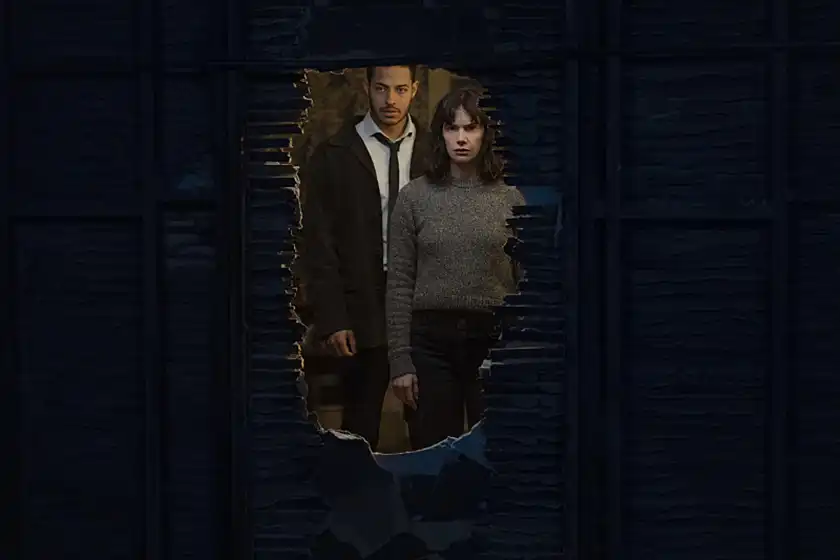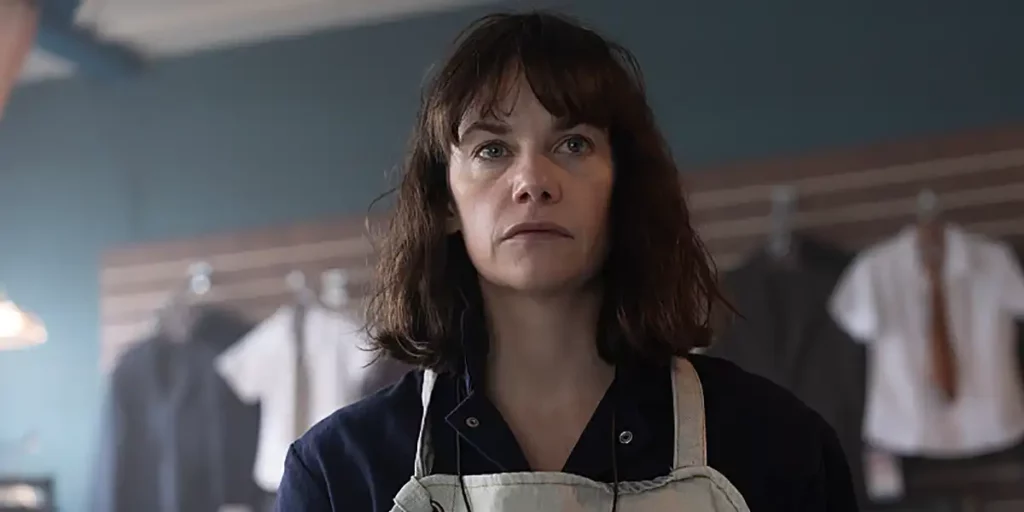Showtime series The Woman in the Wall sheds a harrowing light on inhumane institutions that imprisoned women for over two hundred years.
Showtime’s new six-part mini-series, The Woman in the Wall, exposes the dark truths surrounding Magdalene Laundries, which predominantly operated in Ireland from the 1700s to the 1990s. If you’re familiar with the existence of these horrifying establishments, you’ll know just how inhumane the conditions were. Considered an institution for “fallen women,” each consisted of sex workers and women deemed promiscuous. The idea behind these intuitions was that women sent to them, often by family members, would be cured of their “bad behavior” and rehabilitated.
However, these establishments were anything but welcoming. Women imprisoned were advised that if they tried to escape, they’d be swiftly returned to their living quarters. Another harrowing detail is that women who were sent to laundries due to out-of-wedlock pregnancies would give birth in institutions known as mother and baby homes, only to have their children taken from them and put up for adoption. Each mother would have no say in the matter, with many never having the opportunity to see their child again.
Over time, even children were sent to said institutions, and women were ordered to complete grueling hours of work without pay. The simple truth is that those in attendance were treated like slaves. Any woman fortunate enough to have escaped will never have the fortune of living a life devoid of extensive trauma, nor the joy of being a parent and watching their kids grow up.
The Woman in the Wall follows Lorna (Ruth Wilson), a distressed woman who was sent to a Magdalene Laundry as a teenager after falling pregnant out of wedlock. Lorna was lucky enough to leave the institution. However, due to trauma, she suffers from violent sleepwalking episodes and never discovers what happened to the daughter she birthed all those years prior. After an unexpected commonality between Lorna and the town’s detective, Colman Akande (Daryl McCormack), comes to light, the pair team up to uncover the dark truths of the Magdalene Laundry Lorna attended, exposing years of church corruption.
When I first saw Wilson playing Alice Morgan in Luther, she captivated me with her sinister on-screen presence. The Woman in the Wall further showcases her range, proving there’s nothing the actress can’t do. She is tasked with portraying a highly tortured soul yet manages to balance vulnerability, grief, and trauma effortlessly. Lorna never got to raise her child, and it’s heartbreaking to watch. Though the character in this mini-series is fictional, the treatment of women living in convents during this time period is accurate. It’s infuriating to consider that women shipped off to these institutions endured this reality and never got the chance to discover the whereabouts of their children or know, as the years marched on, whether their sons and daughters were even alive.

The Woman in the Wall takes time to unfold and is convoluted in its approach to storytelling. We are introduced to multiple characters and subplots in a limited amount of time, and for the first three episodes, the direction is unfocused. One particular plot point is illogical and unrealistic, and some elements of The Woman in the Wall feel like vessels to over-dramatize the series instead of serving any real purpose. During the second half of the series, The Woman in the Wall finds its footing, homing in on the history of the laundry and uncovering the scandals, which are gripping to watch.
McCormack gives a decent enough performance, though his character is a bit one-dimensional and dull. His scenes are best when acting alongside Wilson, and the similarities that connect their characters are when the narrative is at its most authentic.
Co-directors Harry Wootliff and Rachna Suri’s setting is atmospheric, creating some genuinely haunting scenes that turn a quaint town into a nightmare. Though shot in Northern Ireland, one of the most beautiful countries in the world, the place Lorna calls home has an eerie aura. This extends to Lorna’s house, which is equipped with the type of wallpaper you’d see at The Overlook Hotel. The setting is unnerving, with dimmed lighting and a daunting atmosphere. A claustrophobic feeling is reflected through the wall subplot and Lorna’s emotions. She is trapped in her own mind, recounting the events of her tragic past, which viewers experience firsthand through her mental anguish. Through Wilson’s performance, we witness the isolation her trauma and abuse have caused and how powerless she has felt in the process. Though Lorna’s solo scenes involve little dialogue, lingering camera shots and close-ups reflect her pain, and Wilson’s performance is at its best in the quietest of moments.
For a series with such heavy subject matter, the ending to Lorna’s story feels cruel, given that the character’s conclusion is based on an unnecessary subplot that needn’t have existed. However, The Woman in the Wall is based on the shocking mistreatment that these women faced for years as attendees of laundries, so, perhaps the end to Lorna’s story is in keeping with the dark tone of the series. After all, justice will never be served, and victims can never get those years of their life back.
Overall, The Woman in the Wall is a devastating, hard watch, bringing awareness to the inconceivable treatment women and children faced in Magdalene Laundries and the abuse of power that took place by the church. Some moments in the series feel overdramatized and detract from the focal narrative. However, it’s still a compelling story, equipped with a sensational performance from Wilson, a practical, eerie atmosphere, and a dramatic and suspenseful tone that stays with you once the series ends. I encourage every viewer to go and watch The Forgotten Maggies on YouTube, where brave Magdalene Laundry survivors share their personal stories.
The Woman in the Wall premiered on January 19, 2024 with the Paramount+ with SHOWTIME plan.

